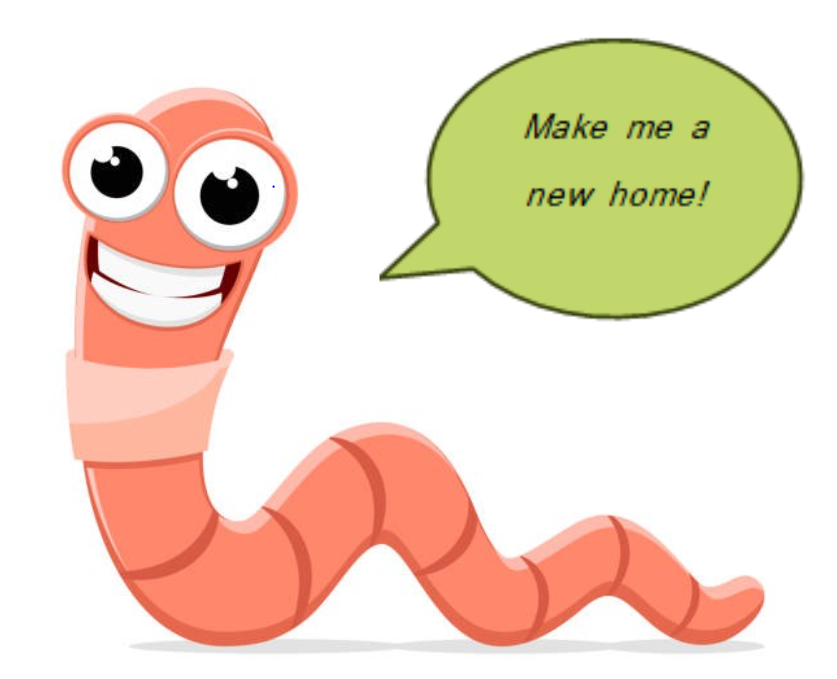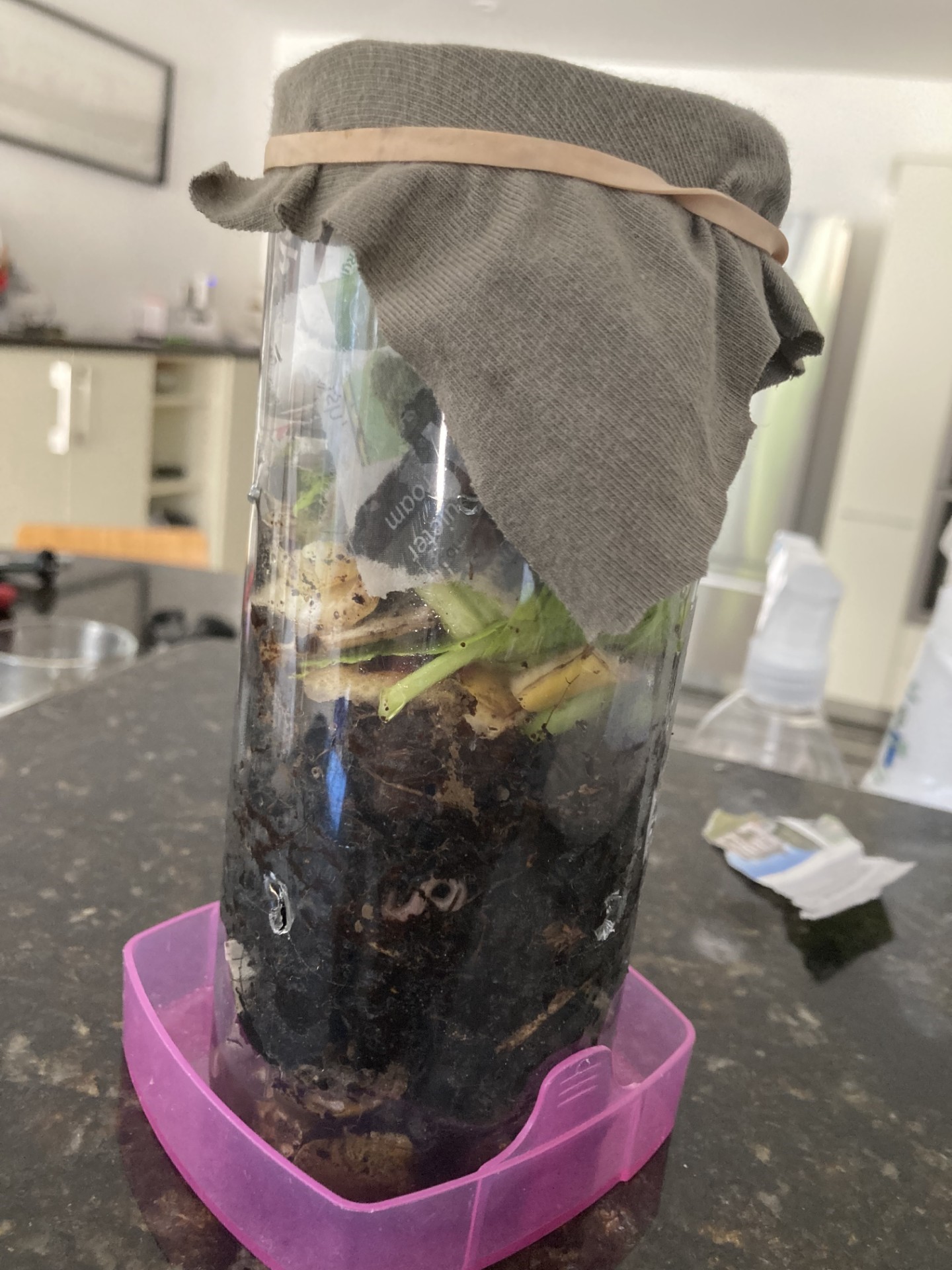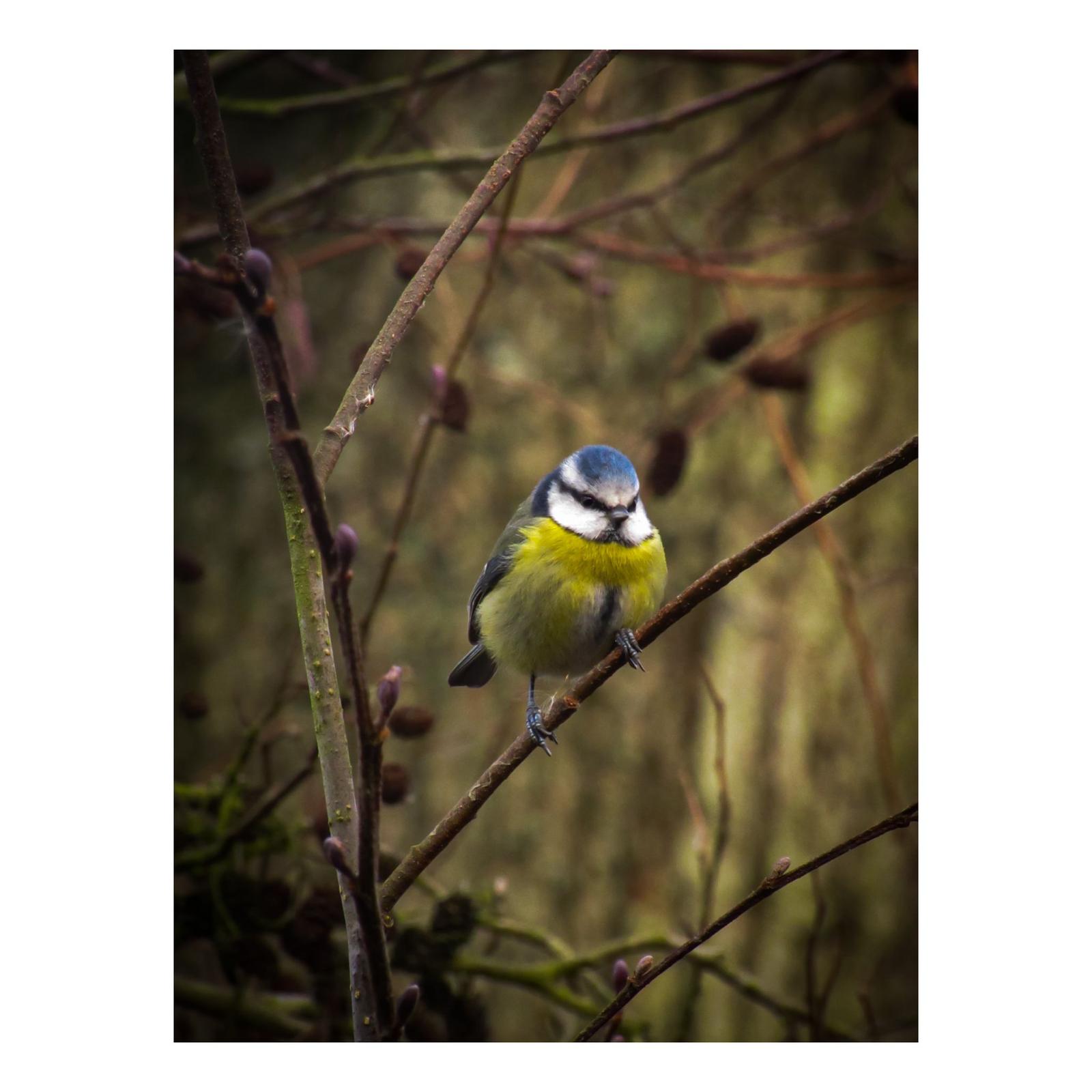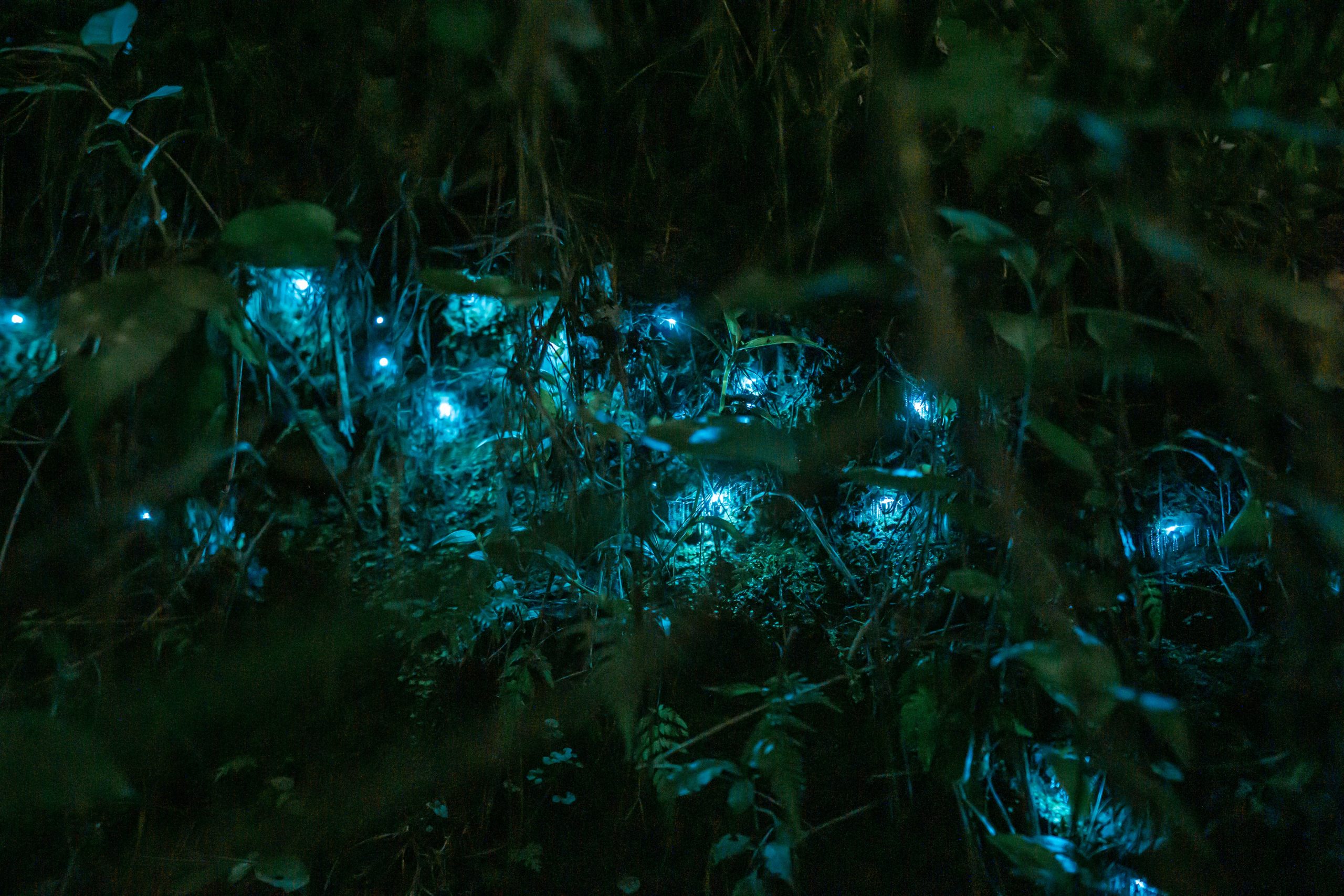You will need:
- Scissors
- Gloves
- Plastic bottle (2litres)
- Thin fabric
- Elastic band
- Card, cardboard, thick fabric or opaque paints

- Small stones/Pebbles
- Compost soil
- Water
- Food waste, like fruit or vegetable peelings
- Shredded paper (or tear up some scrap paper)
- Worms
How to make it
1 – Use the scissors to carefully cut the plastic bottle in half horizontally. Punch small holes in the sides and bottom of the bottle with the end of the scissors.
2 – Place your small stones on the bottom of the bottle.
3 – Pour the compost soil on top of the stones.
4 – Pour a small amount of water on to the compost, so it is moist but not too wet.
5 – Put on the gloves and gently place a few worms on to the compost (gloves from any bacteria).
6 – Keep the gloves on (because food waste may contain bacteria) and gently place the food waste on top of the worms. Don’t push it down because this could harm the worms; it will fall gently by itself.
7 – Place the shredded paper on top of the food waste. Pour a little water on the paper so it is damp but not soggy.
8 – Lay a thin piece of fabric over the top of the bottle and fold the edges over the top of the sides. Stretch an elastic band across these edges to keep the fabric in place.
9 – Use glue, Sellotape or elastic bands to hold card, cardboard or fabric around the bottle to keep it dark. Worms like the dark! Alternatively, you could paint it with opaque paints. Check after a few days to see the progress.

By Madeleine Spencer




0 Comments